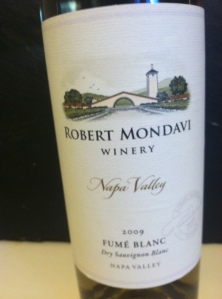Before I get to reviewing the wine, I wanted to give you a little background on my choice for this first entry in this series, and the inspiration behind it. Because wine isn’t just about taste, its about the experience and the story.
I’ve been having a great time reading “The Accidental Connoisseur: An Irreverent Journey Through the Wine World” by Lawrence Osborne. In the book, the author explores the meaning and experience of taste by visiting many vineyards and winemakers in France, Italy and the United States. We all know taste is that thing that so many people have wasted countless amounts of breath and ink trying to pinpoint, but at the end of the day, it all comes down to the individual. Though the book also explores taste as a factor of the market. It’s a memoir of his own personal quest for answers and that is all it attempts to be. There are many parallels in the book to my own journey of discovery here (including the necessary humor and humility) so it is all the more rewarding.
The book starts with the author in Sassoferrato, Italy where Robert Mondavi’s family was from, to attempt to trace the inspiration and roots of a man that would become American wine royalty by the 1970s.
Back in California, he travels to meet and taste with Mondavi himself, before venturing onto Coppola, Beringer, Opus One (a Mondavi-Rothschild venture of much acclaim), Sterling and the more off-the-beaten-path Chalone in Edna Valley. It doesn’t take long to realize that in Napa these days, clusters of large-scaled and architecturally-themed wineries are just another kind of Disneyland, as much for the experience as the product itself. That being said, it is a beautiful place. I rode the Napa Valley wine train many years ago and visited Markham for a dinner and tasting and I was in heaven. That was the first time I had a wine and said “whoah.” Nowadays with the region thriving, there are many a smaller, traditional winery making boutique wines at higher prices. But even these ‘garagiste’ wineries are larger in scale and distribution than many of their foreign counterparts, with plenty of money backing their ventures.
Currently in the book, and I mention this because I got a good laugh here, the author is in Russian River Valley, in the company of a French tourist also obsessed with tasting great California wines. Despite the reputation of Rochioli Pinot Noir, both are struggling to taste the ‘Russian Riverness” in the glass. It is this same experience we all aim for when trying to taste terroir or a sense of place in the glass that is so humorous and validating. And trying to actually taste anything from ‘cigar-box’ to ‘tutti-frutti’ can be fruitless (thank you), all the while winemakers declaring their product ‘hedonistic’ are everywhere, begging the question: “I don’t necessarily agree. Is it me?”
But this all got me thinking again about how my earliest introductions to wine were large producers from California. So while at the wine shop today, I picked up a few of them to revisit the subject and taste some from the author’s travels. Mondavi – check. Coppola – check. Beringer – check. I don’t have the means very often to pick up an Opus One or a Screaming Eagle. If you’d like, you can send me one and I’d be happy to review it. Anyone? Today I will start by reviewing a Mondavi Fumé Blanc. Now that I feel I have come to a more educated place about wine, and my palate and experience far more mature, I am curious to see if these are wines (and again, this is MY taste, I’m not a critic) I would enjoy more with this new knowledge at my disposal.
While many don’t necessarily value a Mondavi as a top American wine anymore, you have to admire that this man was a big part of putting a fairly obscure wine region at the time onto the world wine map. Of course the judgement of Paris also went a long way to that end, as well as timing. Prohibition was over just a few decades ago and there were few American wineries in the area doing anything to note. And while his family was enjoying success making inexpensive wines at lower cost, Mondavi was ambitious and strove to take it to the next level. He bought out nearby reputable vineyards to set up his own winery. It was there that he began upgrading his techniques and experimenting, producing the types of American Cabernets that made the region start to take off again.
In 1966 he succeeded in mass-marketing a wine made in the same methods of its French counterpart, but with its own unique terroir and fingerprint. With his Fumé Blanc, he brought the barrel-aged style of Sauvignon Blanc from Pouilly-Fumé in France to millions of Americans. This was a style and variety that was almost unknown to the non-connoisseur population in this country. Consumers who hadn’t heard of or couldn’t afford a Pouilly-Fumé could at least feel they just expanded their cultural and taste palates. So he certainly knew what he was doing, and is an American wine icon, whether you love it or hate it.
Lemon-gold in color, the 2009 Napa Valley Fumé Blanc had expected floral and grassy notes on the nose, along with some melon, citrus and vanilla from the obvious time in oak. On the palate the oak was stronger and the body full, but it still had a racy acidity and citrus and mineral notes. This is definitely more oaked than I am used to in a Sauvignon Blanc but it was all quite well balanced.
This was priced at $15.99 for a 750ml bottle, and I feel a good value and a good wine. So, off to a good start.
